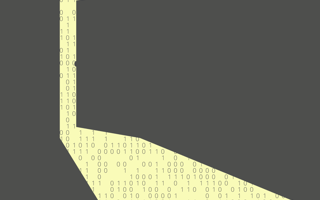A botnet is a legion of electronic devices infected with malware and remotely controlled by malicious actors. This cybercrime phenomenon has kept organizations and individual users on their toes for more than a decade, fueling massive spam campaigns, data theft, click frauds, distributed denial-of-service (DDoS) raids, stealth cryptocurrency mining, and even extortion stratagems.
One of the biggest pitfalls is that most users do not suspect that their machines are plagued by a Trojan or a worm that quietly executes dodgy instructions issued by botnet operators. Some extra CPU load and an uptick in web traffic usage are the only red flags in most cases, but that is not something the average user would notice.
The silver lining is that antivirus tools are growingly effective at identifying and purging botnet-related malware from systems. However, the sophistication of some botnets makes them invisible to mainstream security solutions.
This is the case with Emotet, one of the most dynamically evolving strains of botnets that easily slips under the radar of traditional defenses. It debuted in 2014 as a Trojan that zeroed in on Austrian and German users and tried to steal their e-banking credentials. The pest has extended its reach dramatically ever since. In 2018, Emotet operators repurposed it to download other harmful payloads, including ransomware and scareware.
This campaign culminated with a shift toward botnet activity in 2019. After infecting a computer, Emotet adds it to its botnet and starts parasitizing the host in multiple different ways. For instance, the Trojan accesses the victim’s email accounts and sends booby-trapped messages to all their contacts. Because the recipients are likely to open emails from someone they know, this foul play allows the culprit to increase the attack surface autonomously by recruiting new bots.
The malicious potential of Emotet is unprecedented. According to security analysts’ findings, a single bot can generate hundreds of thousands of spam emails in just one hour. The mind-boggling productivity also goes for the Trojan’s ability to spawn malformed traffic packets, making it a powerful DDoS instrument that can knock large computer networks offline.
As if these wicked properties were not enough, this threat has a polymorphic design, which means that it is constantly changing its digital footprint and thereby circumvents signature-based detection.
Emotet is unique in quite a few ways, but it is not the only botnet out there. Zeus, Dridex, and Mirai are several more examples of today’s botnets that account for large-scale credential-stealing campaigns and DDoS attacks against major Internet services.
Protection Techniques
To safeguard your system against the likes of Emotet, you should nurture a proactive security posture. The following tips will help you become a moving target and prevent your devices from turning into evil bots.
- Keep your systems and apps up to date. Unpatched software vulnerabilities are the common entry points for botnet-related malware. Cybercrooks can unleash what is called exploit kits that probe your systems for such loopholes and piggyback on them once spotted. Therefore, applying updates and patches once they are released is half the battle.
- Use a reliable antivirus tool. Make sure the utility combines signature-based detection with heuristic analysis. This mix can identify suspicious behavior patterns and thereby block polymorphic malware that gets constantly updated.
- Stay away from dubious email attachments. Most botnets hinge on spam and phishing to enslave new devices. If you receive an email that instructs you to download something or click a link, think twice before doing what it says — even if it appears to come from a person you know. You may end up getting infected with simple adware, however, many dangerous ransomware viruses are also distributed this way.
- Use a firewall. A trusted firewall application will alert you to anomalous web traffic that occurs when malware is interacting with its command-and-control server to exfiltrate stolen data or receive instructions from botnet operators.
- Say no to pirated software. Cracked apps may lack proper vendor support and typically do not get security patches. This shortcoming turns them into low-hanging fruit crammed up with vulnerabilities that are fertile soil for malware attacks, so you are better off avoiding such products.
- Use two-factor authentication (2FA). The reason why 2FA matters in the context of botnet protection is that brute-force attacks are among the prevalent system infiltration vectors. Even if threat actors guess your password, an extra authentication factor will keep them at bay.
- Follow the principle of least privilege. If you are a business owner, do not give everyone admin privileges. Be sure to restrict the access rights of your employees based on their roles. This will prevent botnet-related harmful code from spreading laterally inside your digital infrastructure.
- Keep enhancing your cybersecurity awareness. As botnets are evolving and new offensive mechanisms are being added to their repertoire, try to keep abreast of this nefarious progress. Check for relevant updates on reputable cybersecurity portals or simply Google the subject once in a while to read the recent news.
There is no silver bullet when it comes to fending off botnets. Contrary to popular belief, an antivirus app alone is unlikely to keep your device on the safe side. To maximize your protection, use a combo of the above tips, and bear in mind that security is a process rather than a product.





